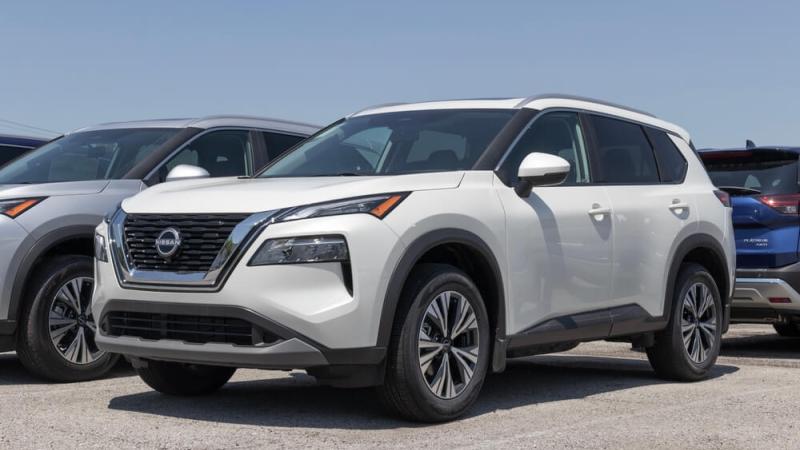If you’re working out your budget for your next car purchase, don’t forget to account for the price of insurance. Even if you’re set on a particular automaker, the model you choose can either drive up or slash your insurance premiums.
Take Toyota, for example. Comparing insurance premiums for multiple models based on the same driver profile*, the Toyota RAV4 is the most affordable 2023 Toyota model to insure, with annual premiums ranging from $2,788 to $3,216 for a 35-year-old female living in Toronto. Meanwhile, a larger SUV like the 2023 Toyota Highlander typically costs between $3,851 and $4,404 per year to insure.
That means that the same driver could be paying $1,000 more per year in insurance premiums alone depending on the car they choose.
The Highlander costs more to insure because it has a higher purchase price than the Rav4, with parts that are pricier and harder to repair – which leads to higher repair and replacement costs. Additionally, its popularity and higher resale value make it a more frequent target for theft (it is currently the most stolen vehicle in Canada)
These insurance premium disparities exist for all popular automakers, even for cars of the same type. Take a look at the list below to learn which models are the cheapest to insure for these popular auto brands.
What brand models are the cheapest to insure?
According to data from Insurance Hotline, the vehicles listed below are the cheapest 2023 models from some of Canada’s most popular car brands to insure.
These models are equipped with common safety features which reduce the likelihood of accidents and, in turn, insurance costs. However, it’s important to note that insurance costs are influenced by a variety of factors. These include how often the vehicle is involved in claims—such as collisions or thefts—how expensive it is to repair, and other data that insurers use to assess risk. Safety features are just one piece of the puzzle.
Also, every driver and location come with unique risk factors, so while the following models are generally affordable to insure, individual premiums may vary. Still, this list serves as a helpful starting point for choosing the right vehicle for you.
Keep in mind that the features listed for each vehicle are meant to show what the car offers, not to say that safety features alone decide insurance prices.
1.Cheapest Toyota to Insure: Toyota RAV4
- Insurance cost range: $2,788 - $3,216
The 2023 Toyota RAV4, a compact SUV, is the cheapest Toyota model to insure. It comes with features like:
- Pedestrian detection to avoid collisions
- Automatic cruise control
- Lane departure warning with steering assist
Other safety features include eight airbags and a blind spot monitor.
2. Cheapest Nissan to insure: Nissan Rogue
- Insurance cost range: $2,451 - $2,697
The 2023 Nissan Rogue, another compact SUV, is Nissan’s cheapest model. Like the RAV4, it includes blind spot monitoring, lane departure warning, and pedestrian detection.
It also has emergency braking with pedestrian detection and rear automatic braking, which help avoid accidents.
Its strong build includes special zones that absorb impact in a crash, a steering column that reduces injury risk, and engine mounts that break away safely in an accident.
3. Cheapest Volkswagen to insure: Volkswagen Taos
- Insurance cost range: $2,277 - $2,546
The 2023 Volkswagen Taos, a subcompact SUV, is one of the cheapest Volkswagen models to insure. It includes safety tools like electronic stability control and a tire pressure monitoring system, which help the car stay in good condition and reduce risks.
4. Cheapest Honda to insure: Honda HR-V
- Insurance cost range: $2,553 - $2,809
The Honda HR-V, a subcompact SUV, comes with many safety features that help prevent accidents, similar to the vehicles mentioned above, like having forward collision and lane departure warning features.
The HR-V also comes with LED headlights and taillights, which make it easier to see and be seen, especially at night or in bad weather. In cold areas, the front wiper de-icer helps keep windshields clear on frosty mornings.
5. Cheapest Subaru to insure: Subaru Crosstrek
- Insurance cost range: $2,045 - $2,388
The 2023 Subaru Crosstrek Hybrid is a compact SUV, which includes helpful features like the reverse automatic braking, which stops the car if something is behind it, and blind-spot detection with rear cross-traffic alert, which warns you about cars you might not see.
It also has LED headlights that turn with the steering wheel, making it easier to see around corners, and high beam assist, which automatically adjusts your headlights at night.
6. Cheapest Chevrolet to insure: Chevrolet Silverado
- Insurance cost range: $2,375 - $2,425
The 2023 Chevrolet Silverado is full-size pickup truck. It comes standard with a package of technologies designed to help prevent accidents, and it features IntelliBeam headlights, which automatically switch between high and low beams. This helps improve safety when driving at night.
7. Cheapest Ford to insure: Ford Escape
- Insurance cost range: $2,661 - $2,708
The 2023 Ford Escape, a compact SUV, comes with a rear-view camera to help with backing up, and active parking assist to help with parallel parking. It also includes an automatic high beam control feature, which improves visibility at night by switching between high and low beams as needed.
For added safety, the Escape includes stability control, traction control, and roll stability control, which help keep the vehicle steady in slippery or difficult driving conditions. It also has a post-crash alert system that turns on the hazard lights, unlocks the doors, and sounds the horn after a serious crash to help first responders find the vehicle quickly.
8. Cheapest Kia to insure: Kia Seltos
- Insurance cost range: $2,492 - $2,746
The 2023 Kia Seltos is a subcompact SUV designed with safety in mind. It is built with six airbags, electronic stability control, and hill-assist control, all of which help protect occupants in a variety of driving conditions.
9. Cheapest Tesla to insure: Tesla Model Y
- Insurance cost range: $4,600 - $5,400
The 2023 Tesla Model Y is built with standard safety technologies like blind-spot alert, collision warning, and a surround view camera to help prevent accidents before they happen.
Its all-electric powertrain not only cuts fuel costs but also requires fewer repairs than gas-powered vehicles.
The vehicle’s safety record is reinforced by features like traction control, stability control, and a solid 4,416-pound frame, adding another layer of protection.
Related: Your guide to owning an electric car in Canada
10. Cheapest Mazda to insure: Mazda CX-30
- Insurance cost range: $2313 – 2664
Every 2023 Mazda CX-30 comes with standard safety features like the ones mentioned in this list. It also includes features like blind spot monitoring, rear cross traffic alert, and radar cruise control. These systems help drivers avoid crashes by warning them of nearby vehicles, helping with braking, and keeping a safe distance from other cars.
Why do insurance costs vary by car model?
According to the Insurance Bureau of Canada (IBC), cars that are statistically more likely to be stolen, involved in collisions, or result in expensive repairs or injury claims tend to have higher insurance costs.
That’s why models with strong safety records and lower repair costs often come with lower premiums.
Insurers also consider factors like car safety features and repair costs to weigh the likelihood of accidents and expensive repair claims in the future.
As alluded to earlier, theft rate is another major factor influencing insurance premiums. When a car is frequently stolen, insurers account for the higher likelihood of claims for replacement or repairs—driving up premiums for owners of those models.
Since 2017, insurance claims related to stolen vehicles have surged by 165%, while the cost of handling these claims has skyrocketed by 538%.
Most of the vehicles on the most stolen vehicles list tend to be newer and feature keyless ignition systems without proper anti-theft protection, making them easier to steal.
If you're aiming to keep insurance costs down, consider choosing a vehicle with strong anti-theft features like alarms, engine locks, and tracking systems. These features make cars harder to steal and can help lower your premiums.
Read more: Which cars are the most and least reliable?
How can you lower your car insurance premiums?
If you’re set on a model but still want to keep insurance rates low, here are a few straightforward ways to do so:
- Bundle policies: Combine your car insurance with other policies—like home or tenant insurance—for multi-policy discounts.
- Drive safely: Most insurance companies offer a claims-free discount to reward drivers who have kept a clean record for a certain number of years. They’re also less likely to increase your rate substantially upon renewal if you don’t make a claim.
- Compare quotes: Shop around and get estimates from multiple insurers to find the best rate for your needs.
By following these tips, you can keep your insurance costs manageable without sacrificing the coverage you need.
Learn more: Can high-risk drivers still save on car insurance?

